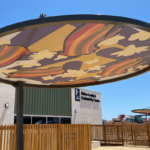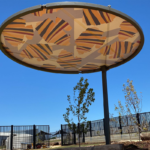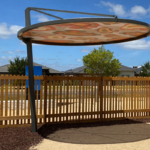Company:
MakMax Australia
Project Details
Fabric 1
Awnscreen
Producer/Manufacturer:
Hiraoka & Co. Ltd.
Primary Use:
Main Fabric
Engineer Company 1
MakMax Australia
Design Company
MakMax Australia
Fabrication Company
MakMax Australia
Subcontractor Company
Bespoke Wire & Rope
Graphics Company
MMT Printing
Installation Company
MakMax Australia
Please describe the project specifications
As part of the City of Casey’s new master planned community, the Eliston Family Community Centre was designed to provide the local community with a communal space with health facilities, educational support, and family services as well as a space for community meetings and events. The vision of the project design promoted Eliston’s rich history and flourishing community.
We were commissioned by City of Casey to design and construct several shade structures at Eliston Family Community Centre. The brief included three circular shade structures featuring unique artwork designs to inspire visitors to the centre. The vibrant and colourful artwork, by Australian artist Steven Carson, is a playful interpretation of the Cranbourne meteorite story, and draws inspiration from local children’s drawings of the historic meteorite fragments found in the area since 1860.
The brightly coloured, art-infused shade structures create a unique architectural statement. The three circular structures each have a different design, telling a different part of the story in a playful manner. The astronomically themed artwork suspended above the viewer creates an interactive experience of looking up at the meteorite shower in the sky.
Designed to enhance the outdoor area while providing shade protection for the children’s playground and BBQ courtyard, the cantilevered support pole on each structure allows for maximised use of the space underneath the canopies, making them ideal for play spaces.
The application of Woodland Grey coloured powder-coat steel, rather than a galvanised finish, creates an elegant shade structure that blends seamlessly into architecturally designed community centre.
An additional seven traditional cantilever style umbrellas (1 single and 3 double boom umbrellas) are also integrated into the space. Fabricated from premium quality architectural PVC fabric, the umbrellas provide sun and weather protection over the sandpit and play areas. The customised double boom offers a larger area of shade coverage, keeping children safe from harmful UV rays while they play.
One of the main challenges to overcome during the fabrication process was printing the artwork onto the PVC mesh. We had difficulty finding a printer who was capable of printing onto the fabric that was initially proposed for this project. Despite having successfully deployed printed fabric structures in the past, we were advised by several print companies that the print technology has since changed. Previously, solvent-based inks were used, the new printing process utilised UV activated inks. We overcame this challenge by testing print samples to analyse print quality and ink adhesion for several fabrics. Hiroka Awnscreen PVC Mesh was the most suitable fabric with its printable lacquer coating and proven print longevity. The fabric perforations are also much smaller than most PVC mesh fabrics, resulting in a more prominent print finish.
The artwork was digitally printed on the underside of the PVC canopy to ensure an uninterrupted finished across the seams. With each design needing to be split into 3 sections to accommodate printing, a great deal of care was taken in patterning the fabric. When welded together, it was vital that the elements in the artwork aligned to create a single image.
The smaller fabric perforations offered better print quality, UV protection and shade, however there was a concern that the small perforations and flat design of the structure may restrict waterflow and cause ponding to occur. Water testing revealed that water was able to pass through the fabric mesh, however our concern was that over time, the pores of the fabric could clog with dirt. If this was to occur, the fabric could theoretically hold water and cause ponding issues down the track. Our in-house engineering team proposed a solution to include a single 29mm hole in the fabric at the centre to increase waterflow and alleviate any ponding issues.
With the fabric testing and analysis taking longer than anticipated, we needed adjust our installation methodology to accommodate the fabric approval process. We achieved on-time practical completion by sending the install crew to site to install the steel structure ahead of the fabric. In between the structural install and the membrane, the landscaping had progressed, which in turn limited our EWP access to the site. Fabric install was instead completed using scaffolding to avoid any damage to the new landscaping.
What is unique or complex about the project?
This was a small but exciting project for us. We do not have much opportunity to create with digitally printed fabrics, so the challenge of printing and patterning a set of unique freestanding structures really appealed to us. The fact that the printed patterns were provided by a renowned local artist made the project even more exciting.
Inspired by the local area’s rich history, Australian artist Steven Carson uses vibrant colours and patterns to create a playful interpretation of the Cranbourne meteorite story. The astronomically themed artwork suspended above the viewer creates an interactive experience of looking at the meteorite shower in the sky. Our challenges of converting his artwork into .eps files capable of printing at the scale required and splitting each round artwork into 3 panels in order to be printed made this project very satisfying to see come to life.
Content is submitted by the participant. IFAI is not responsible for the content descriptions of the IAA award winners.
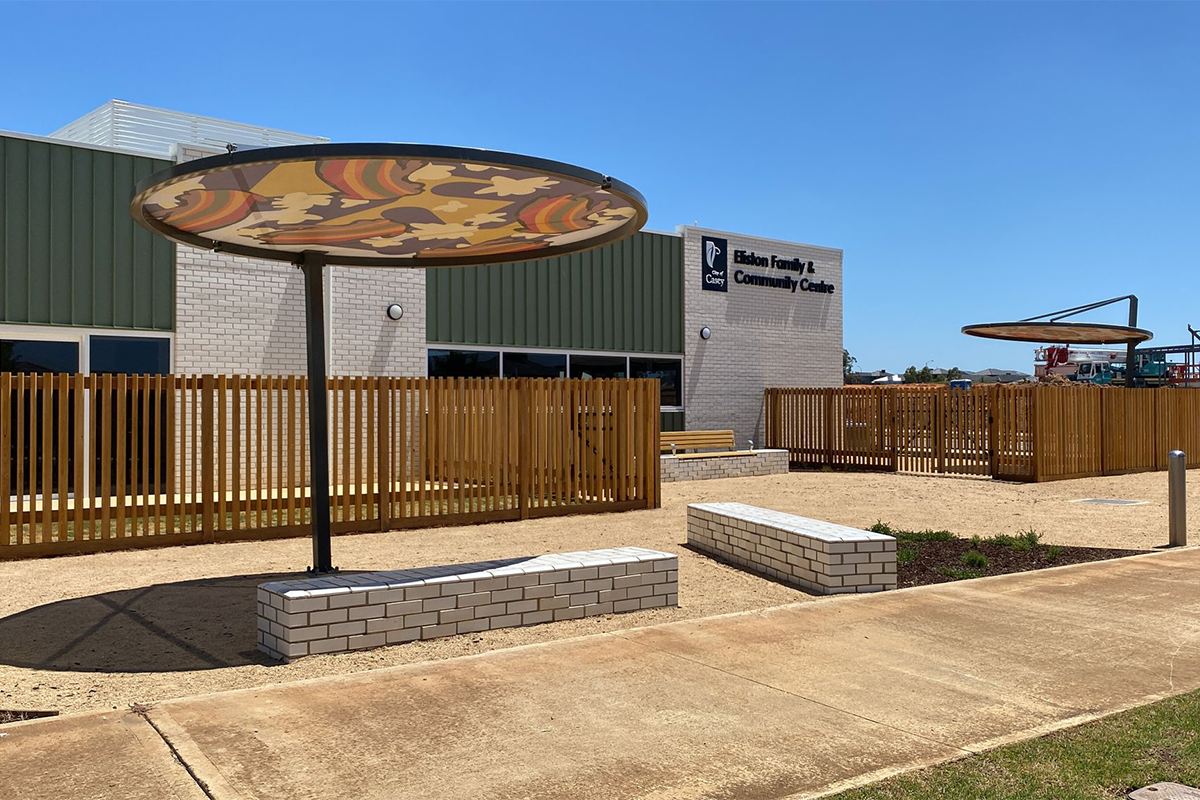
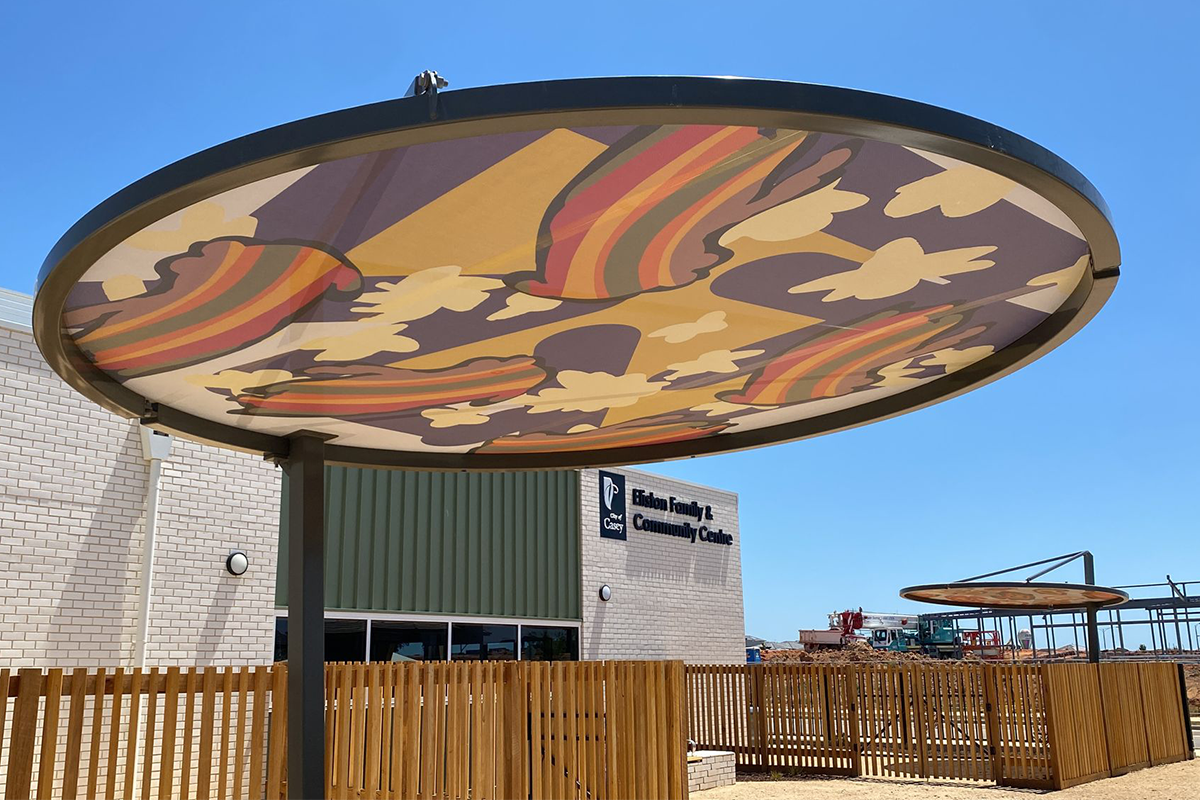

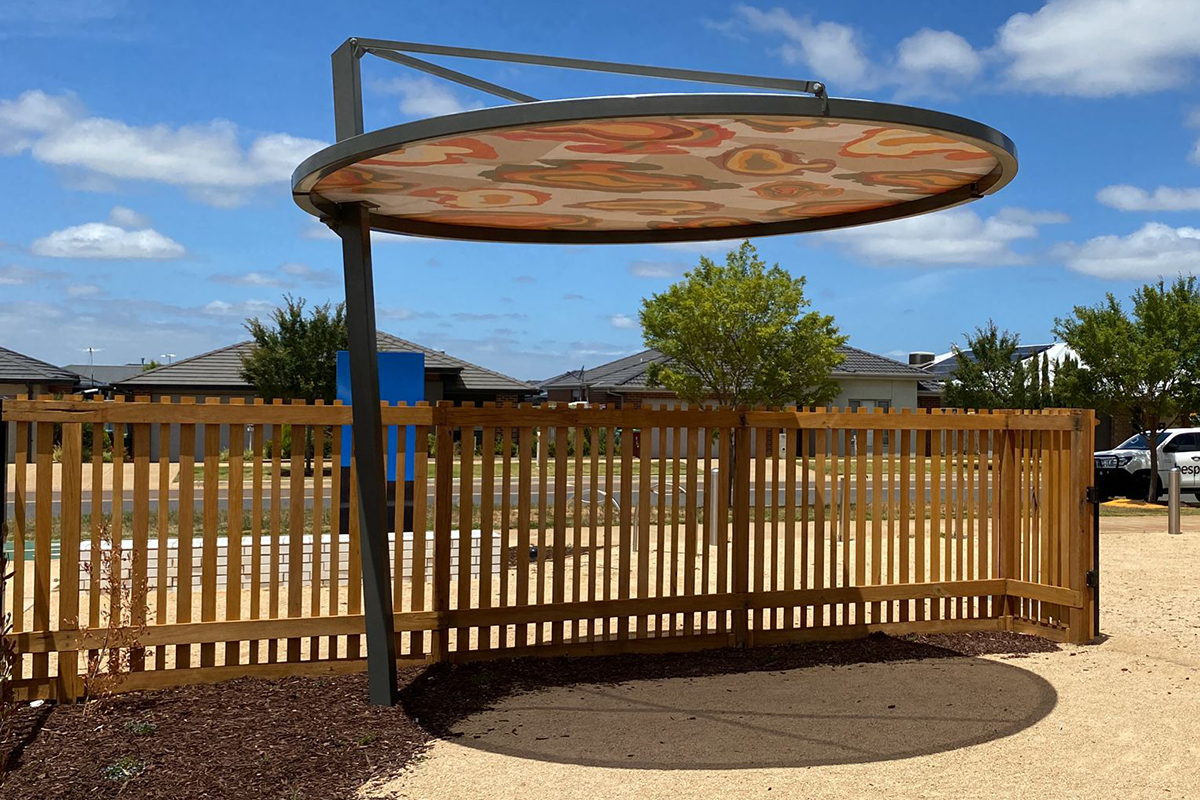
 TEXTILES.ORG
TEXTILES.ORG




